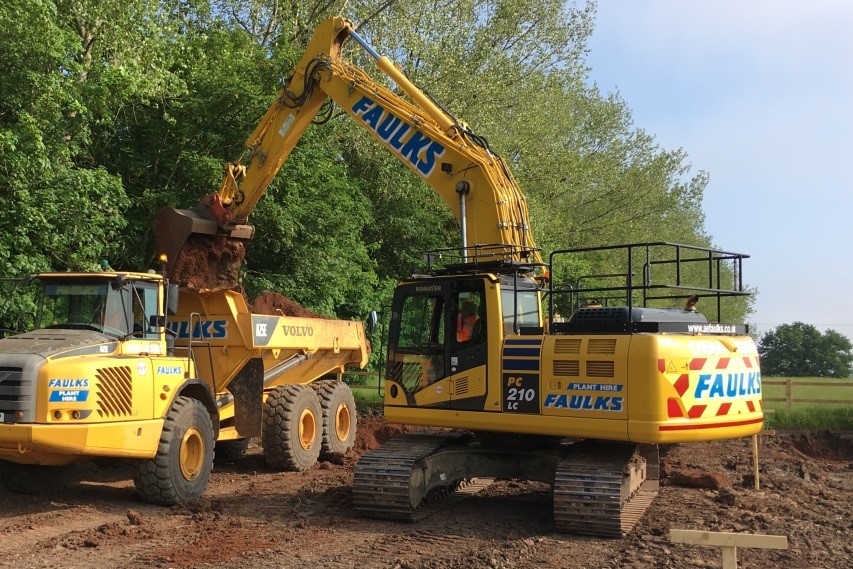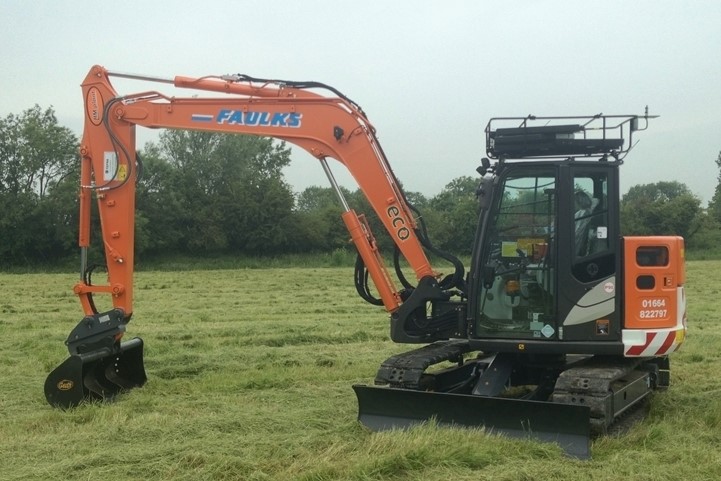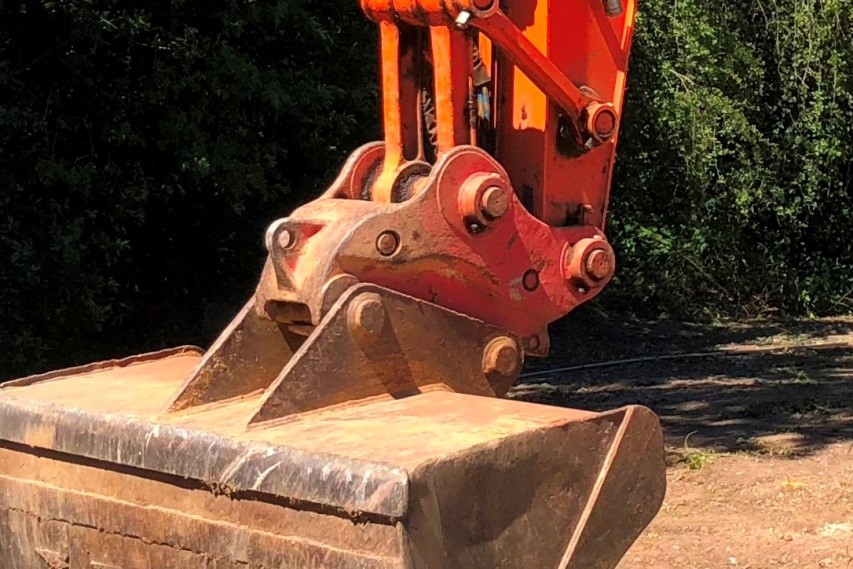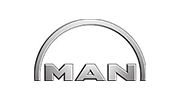A tracked excavator can make an invaluable contribution to your construction project due to its versatility and usefulness throughout the construction cycle.
From demolition, site clearance, bulk excavations, drainage, foundations, grading and lifting requirements, tracked excavators are usually present. Your excavator needs to get the job done, and that’s the top criteria when choosing the right one. Here are some tips on how to select the right tracked excavator for your situation.
Size Matters
Consider the size and scale of the tasks your excavator will need to perform. The right sized excavator will be able to safely access and manoeuvre around your job site while having the capacity to handle your digging, reaching, lifting and loading needs with ease and efficiency.
Excavator load capacities can range from a fraction of a cubic yard for mini excavators to several cubic yards of material for larger excavators. An excavator’s load capacity determines how much material you can move in one cycle, which impacts your operating speeds. Look for an excavator with a large enough bucket capacity for your digging and loading needs. There’s no such thing as a one-size-fits-all application when it comes to excavators.

Tracks
Tracked excavators can be outfitted with rubber tracks or steel tracks, or even a hybrid of the two, with rubber pads bolted to steel tracks. The overriding consideration here is the terrain you’re offloading onto, travelling over and working off.
Rubber tracks cause far less damage than steel tracks on tarmac and concrete, as well as providing better grip on these hard, smooth surfaces. However, in wet or muddy conditions, steel tracks offer more traction/stability, especially on sloping or uneven surfaces. Compared to the loud clattering of steel tracks, rubber tracks are more neighbour-friendly. Rubber tracks reduce vibration and produce a far more comfortable ride than steel tracks, reducing operator fatigue.
Tail-swing
Excavators can be provided with zero tail-swing, reduced tail-swing and conventional tail-swing configurations. On a zero tail-swing design, the excavator’s counterweight doesn’t extend beyond the outside of the tracks as the machine rotates. With a reduced tail-swing machine, the counterweight typically extends only 10 or 20 cm’s beyond the track.
Reduced and zero tail-swing models have become popular due to their easy manoeuvrability in urban and residential areas where space is limited. However, there are advantages to using a conventional tail-swing excavator, including added lifting capacity and bucket and arm breakout force due the overhanging counterweight providing more leverage than a reduced tail-swing machine. There is also more room in the cab and they’re easier to work with.

Attachments
Equipping your excavator with the right type and sized attachments is a great way to get greater versatility from one machine. Choosing the right excavator means knowing which attachments you need and making sure the excavator is compatible with those attachments.
The most common attachment is the excavator bucket, but there are many other attachments available such as hydraulic breakers, crushing buckets, grabs, screening buckets, rakes, augers etc. Selecting the right attachments for the job can help take the tracked excavators performance to new heights.
Safety Features
Having your excavator fitted with the right safety features can also improve the efficiency and productivity of the machine. A twin-lock hydraulic quick-hitch not only negates the need for manual intervention to provide secure coupling of buckets and attachments, but also significantly speeds up the process.
Rear and side view cameras benefit the operator with an instantly increased field of vision, allowing for quicker and safer manoeuvring operations. The installation of safe load indicators allows the excavator to lift the maximum permissible load (for the reach, height and machine orientation) rather than being limited to a downgraded safe working load. An integrated height and slew limiter allow for greater productivity where headroom and side space is restricted.

AE Faulks is an established and well-respected plant hire company, providing a wide range of tracked excavators and attachments, perfect for all manner of construction projects. The range includes 3.5t mini excavators, midi excavators (6t to 8t) and an extensive large excavator range (14t to 30t). They are available to hire on an operated or self-drive hire basis throughout the West Midlands and East Midlands regions of England. For any questions regarding our construction plant hire, please do not hesitate to contact us.
- Plant Hire in Nottinghamshire
- Plant Hire in Leicestershire
- Plant Hire in Derbyshire
- Plant Hire in Lincolnshire
- Plant Hire in Rutland
- Plant Hire in Northamptonshire
- Plant Hire in Staffordshire
- Plant Hire in Warwickshire
- Plant Hire in Cambridgeshire
- Plant Hire in Birmingham
- Plant Hire in West Midlands















